Small Cash Donations Can Pay Dividends for the Rural Poor


Imagine an organization that gives money to people in poor countries, unconditionally. As in, they can do with it as they wish. And imagine that money actually makes a difference in the lives of the recipients. One organization making this dream a reality is GiveDirectly. The nonprofit gives small cash transfers, around $1,000, to people in poverty.
GiveDirectly is piloting its system in Kenya and Uganda. The New York-based nonprofit uses electronic payment systems to transfer the money to recipients. But first, the GiveDirectly team needs to decide who the recipients will be. To do so, they use publicly-available data and send field staff door-to-door to collect data on poverty before enrolling recipients. Recipients receive a text message alert and then can collect cash from a local mobile money agent.
In the Kenyan regions GiveDirectly serves, the average recipient lives on 65 cents a day. The nonprofit uses a “range of factors” to select recipients in Kenya, such as housing, assets and vulnerable recipient status, according to its website. The selection process is similar in Uganda, where the average recipient lives on 83 cents a day.
And these relatively modest philanthropic investments have a big impact not only for recipients, but also for their entire villages. “After receiving the transfers, life has improved and people now own livestock,” Frederick, 30, who is not a recipient of the cash transfers told GiveDirectly.
In another account, a recipient who received a cash transfer in 2014 said she used a "large portion of the transfer to cover her school fees so that she could complete her schooling, and then graduated and immediately sought employment." She also applied to work for GiveDirectly and got the job. “From living off of less than one dollar a day, to now being employed in one of the most competitive roles available, the cash transfer from GiveDirectly has completely altered the path of her life, and she will reach heights that only two years ago she would have thought to be completely unattainable for her,” Andrew McDermott recounted on NewCo's Shift blog.
Evidence shows cash transfers work
Studies show cash transfers like the ones GiveDirectly provides to people in Kenya and Uganda work. A 2013 study looked at a large cash transfer program in northern Uganda and followed thousands of mostly unemployed young people two and four years after they received grants worth twice their annual income. “Most invest the transfers in vocations and earnings rise by at least 40 percent, especially among the more credit-constrained, patient, and risk-averse,” researchers found.A recent study looked at cash transfers from GiveDirectly in rural Kenya. What researchers found is that “unconditional cash transfers have significant impacts on economic outcomes and psychological wellbeing.” And they found that there are “large, positive and sustainable impacts” on assets, earnings, food security, mental health and domestic violence. The impacts were seen after four months, on average.
Similar cash transfer pilots are also planned in developed countries, including Finland, the Netherlands and Canada. If the pilots are as successful as GiveDirectly, cash transfers may become a more common way to help poor people better their lives.
Image credit: GiveDirectly
How Volunteering Can Strengthen Your Company
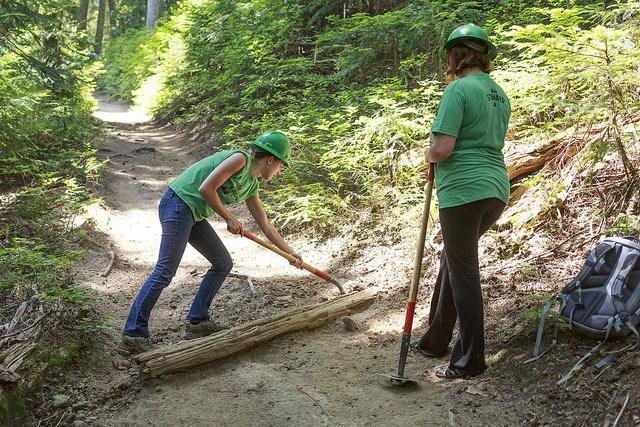

By Pamela Hawley
Volunteering can do more than make you feel good. It can help strengthen your company. Volunteering shows what your company stands for, attracts people who want to help, encourages collaboration, improves employee retention, and enhances brand image. If you haven’t guessed it already, all of these factors help your company’s bottom line. More people want to work for you, and customers want to buy your products because they feel good about what your company is doing.
Volunteering is a key part of any corporate social responsibility (CSR) program. Here’s why volunteering is invaluable to your company, and some tips on how to develop your program.
Instill company values
Volunteer work is a great way to show employees your company’s core values. When employees volunteer, they live your values firsthand. Not only are employees more aware of the company’s mission, but they will also appreciate company organized community work. It also helps individuals grow. If you get people out of their normal schedules, they’ll think differently, come back refreshed, and have new ideas.
In order to do this, create volunteer opportunities based on your company’s goals. Giving is positive and lighthearted. It sounds easy, but you can’t take it lightly. As with any business objective, sit down with your management team and establish a Volunteer Policy and Plan of Action. Determine what cause or causes match your values and business objectives.
Attract and retain employees
Volunteer programs are a must to attract talent. Even if people don’t take advantage of the volunteer benefit, they want to know it’s there. Fifty-nine percent of millennials now gravitate toward companies with pronounced CSR programs, according to a PwC millennials survey. Your volunteer program could very well be the difference in attracting an employee considering two different job offers, and encourage him or her to remain loyal to your company.
Equally, your employees are motivated by a desire to give back to the world. Research from Cone Communications shows 74 percent of employees say their job is more fulfilling when given the opportunity to make a positive impact at work.
Generate team-building
Team-building can be extremely beneficial to your company. It facilitates new ways of working together. First, you need to determine your business objectives and ensure the volunteering supports it. Are you a small or large company? Is your company local or global?
Be creative in the types of opportunities you offer and the times people can volunteer. Ensure you get team feedback as to the types of opportunities they’d like to see. A key trend is that managers are organizing volunteer trips as team building exercises. Pull employees from different business units who don’t normally work together. New ideas will flow!
Improve your company’s image
Volunteering helps companies enhance their corporate brand image. It’s important that local communities see beyond the company’s office buildings, its logo and it marketing. It’s interesting to note that 40 percent of Silicon Valley companies have one to four corporate sponsored events per year; and, even more impressive, 46 percent of companies hold 10 or more events per year (Silicon Valley Community Foundation).
By volunteering out in the community, others will see your company’s presence in a positive light. When they think of your company’s product, they’ll think of all the good you do. Your product, and company, are associated with this good work.
Employees volunteering in the community lend a new light of visibility to companies. People see you doing good, and it establishes trust in your company. It highlights corporate presence and brand – while helping a company’s bottom line.
The best volunteer program
To build a successful corporate entity, people have to believe that their 12-hour corporate days mean something. And while individual employees’ day-to-day work might not be in corporate foundation work, they still want to be associated with the good within your company. By incorporating volunteering into your company’s culture, you will see your company grow stronger and more resilient. You will help your business, and your communities.
Finally, volunteering is not just about the act itself. A kind “volunteer mindset” starts the first minute of your day. It’s about helping others with their day-to-day tasks. It’s about being forgiving when others are under pressure. It’s about offering a helping hand, or a word of encouragement. That’s your best volunteer management program. If you aren’t living this, no volunteer work will help.
Image credit: Flickr/Mount Rainier National Park
Pamela Hawley is the founder and CEO of UniversalGiving, an award-winning nonprofit that connects volunteers and donors with quality service opportunities. She is a winner of the Jefferson Award (the Nobel Prize in Community Service) and has been invited to three Social Innovation events at the White House. She also writes Living and Giving, a blog with the mission of “Inspiring Leaders to Live with Excellence and Love.” Connect with Pamela || Connect with UniversalGiving
Sustainable Commodity Sectors Can Prevent Instability


By Lise Melvin
How can business help advance international sustainability goals and prevent global instability? This is the question being explored by leading companies, civil society and the United Nations at the 2016 Private Sector Forum this week.
Over the last few years, I have been involved with the U.N. Development Program's Green Commodities Program (GCP). We are now supporting 11 governments to evolve their national commodity sectors into engines of sustainable development. If managed sustainably, not only can deforestation and biodiversity loss be curbed, but these sectors can also improve the lives of millions of people, especially those living in rural areas.
Sustainable commodity sectors support almost all of the U.N. Sustainable Development Goals. They can provide local jobs, improve incomes, empower women and promote healthy environments. This can ultimately make communities more resilient against shocks and instability.
But what will it take to achieve sustainable commodity sectors, and what role does business have to play?
Through our work, we at GCP have learned that no single group can overcome the complex barriers to sustainable commodity production. All commodity stakeholders need to work together on a shared agenda to address fundamental issues. For example, developing effective legal frameworks or boosting support for farmers.
Moving beyond supply chains
For businesses, this means moving beyond their own supply chains and supporting action on a wider scale. We are seeing forward-thinking companies, such as Mondelez International and Ikea, doing this. They are actively participating in government-led National Commodity Platforms that we support.
For example, in the Dominican Republic, the public and private sectors will support farmers to adopt much-needed agricultural practices. This is part of an action plan that all cocoa stakeholders are now supporting. This is key to boosting yields, incomes and helping to revive dying cocoa growing communities. Using materials developed by national academic institutions, farmers who participate in organized commercial supply chains can access training through their buyer or processor. Meanwhile those who sell through informal networks can receive the same training from the Ministry of Agriculture. In this way stakeholders will reach the majority of the country’s cocoa growers.
Honest and open dialogue
Achieving sustainability also means businesses must honor their global commitments toward, for example, deforestation-free supply chains, with concrete actions on the ground. Business needs to adequately resource, monitor and align these with national development agendas. It also means businesses participating in honest and open dialogue with a range of stakeholders.
Through our work, we have seen firsthand the challenges that public and private stakeholders face. Often they are not used to working together and come from vastly different working cultures. We found that bridging this divide requires a neutral space where dialogue can take place and greater understanding and trust can be built.
The 2016 Private Sector Forum is an important event where the potential exists for public and private actors to speak openly and honestly about the urgent and complex global challenges facing us all. It is an opportunity to explore how we can successfully support business to move beyond their supply chain. Also, to take concrete action on the ground to fulfill international commitments, and continually create space for honest and open dialogue. In this way, this influential sectors can make significant contributions to reaching the Sustainable Development Goals and promoting stability in developing countries worldwide.
Image credit: Flickr/Department of Foreign Affairs
Lise Melvin is a part time Senior Programme Advisor at GCP, focusing on best practices for National Commodity Platforms and capacity building for platform practitioners. Before 2013, Lise served as founding Chief Executive of the Better Cotton Initiative for seven years. She has a BSc in Environmental Science, and an MSc in Responsibility in Business Practice. She has over 14 years of experience working globally on multi-sector dialogue, agriculture, sustainable development, and supply chains.
Study: Almost 100,000 Deaths in Indonesia Linked to Forest Fires, Illegal Palm Oil


According to a study released by Harvard University, smoke from agricultural fires caused approximately 100,000 deaths throughout Indonesia last fall.
The study, which had support from researchers at Columbia University and was funded by the Rockefeller Foundation, comes at the end of another difficult summer in Southeast Asia. Smoke and haze from even more fires blanketed much of this island nation of 250 million people again this year, and caused air pollution problems beyond its borders. Press accounts suggest these fires were the worst in the country since 1997.
The research blames the burning of peatlands for releasing large amounts of fine particulate matter (PM2.5, which refers to the size of the particles), which the World Health Organization says is a leading cause of pollution-related deaths worldwide. PM2.5 was also blamed for early deaths in the U.S. in a Massachusetts Institute of Technology report issued a decade ago. In Indonesia, Harvard researchers attribute most of these fires to the burning of land to make way for palm oil and timber plantations.
By combining satellite data, surface PM2.5 observations, smoke exposure levels and public health impact estimates, the study suggests 91,600 deaths in Indonesia were linked to the higher levels of particulate matter across the country. Another 7,700 cases of smoke-related mortality in Malaysia and Singapore could also be attributed to those fires. That number is over 1.5 times higher than the estimated number of people who died similar deaths in 2014, and is a mortality rate 2.7 times higher than in 2006.
Press accounts over the summer suggest this could be another grim year for Indonesian citizens. Fires have been so prevalent that earlier this week Indonesia’s most powerful Islamic council issued a fatwa (religious law) that sought to discourage farmers and agricultural companies from using slash-and-burn methods in order to clear land. And as reported by the Wall Street Journal, fires are being set across Indonesia’s remote West Papua province as palm oil companies seek more virgin land for this lucrative crop and fewer local regulations.
WWF estimates that palm oil is in about half of all food and personal care products worldwide. It helps with products’ consistency, performs well as an emulsifier and stabilizer, and allows crisp snacks to crunch in the mouth while cakes can long stay soft and moist. But the result has been widespread deforestation across Indonesia and Malaysia, the top two palm oil producing nations on earth.
And the organization tasked with ensuring that more palm oil is cultivated and produced responsibly, the Roundtable on Sustainable Palm Oil (RSPO), is either unable or unwilling to halt continued deforestation. As the world’s population grows and demand for this ingredient rises, watch for more environmental and human rights problems to fester as palm oil producers look to regions such as Africa and Latin America in which to grow more of this crop.
There is some hope on the horizon, as seen in villages such as Dosan, located on the Indonesian island of Sumatra. As a recent Guardian profile suggests, this community, right in the middle of palm oil country, is building dams and blocking canals to prevent the drainage that allows peatlands to dry, then be burned. Other studies show that closer cooperation between palm oil producers and local communities can help aid landscape restoration while preventing deforestation.
But fires are still being set in palm oil regions, as recent drone footage revealed. The Indonesian government has been both inept and out-manned at stopping this damage. The palm oil industry has also shown that it cannot police its wider supply chain. True, the Harvard study infers that technology can have a role in identifying the most dangerous fires so citizens can be warned. Data modeling can also gauge the best land-use scenarios over the next few decades to make better decisions and prevent more fires.
Nevertheless, it is time for the world’s largest consumer packaged goods (CPG) and food companies to do more than just make promises to source and support sustainable palm oil. These businesses profit the most from the use of palm oil; hence they have the resources and money to fuel efforts to stop what has been an ongoing tragedy for far too long.
Image credit: CIFOR/Flickr
Trump Foundation More of a Slush Fund Than a Charity
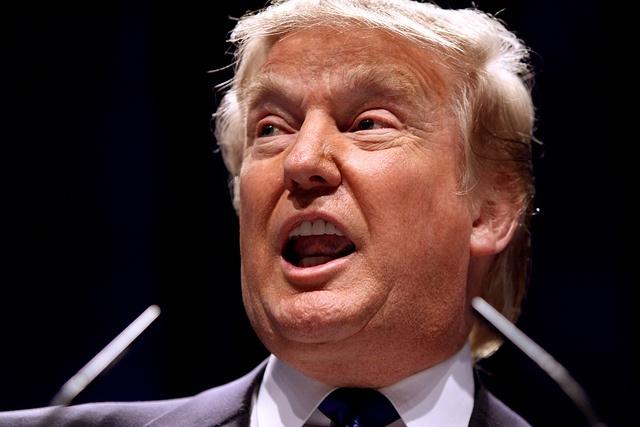

America has a proud tradition of corporate philanthropy, starting with the Carnegies, Rockefellers and Mellons of last century. Such largess has been matched, perhaps even exceeded, by the likes of Bill Gates, Warren Buffett and Pierre Omidyar today. The result is a stronger and better country, thanks to funding education and libraries, investments in science and technology, and improvements in public health and urban renewal.
But this legacy is under attack by Donald Trump and his eponymous foundation. A closer look at the Trump Foundation reveals it operated less like a charity than the Republican candidate often champions -- but upon questioning refuses to share any details. Instead, a Washington Post investigation suggests the Trump Foundation was used more of as a legal fund.
Trump cashed in at least $258,000 from the Trump Foundation to settle legal disputes, David Fahrenthold, one of the few reporters in the mainstream press who refuses to be cowed by The Donald, wrote in the Washington Post this week.
And that money was not even Trump’s money, but that of others who donated to his foundation. By most definitions, the man who wants to become the nation’s 45th president has been operating a slush fund.
One case, almost a decade ago, involved a $120,000 fine from the city of Palm Beach, Florida. It centered around a dispute concerning the height of a flagpole on Mar-a-Lago, Trump’s estate and club in the Sunshine State. Trump agreed to settle with the city by promising a $100,000 donation to a veterans’ charity. But the check did not come from Trump or one of his businesses, but his foundation.
Another instance involved a lawsuit filed against one of Trump’s golf courses in New York. The settlement’s terms included a provision that Trump or his business would donate to a charity of the plaintiff’s choice. But Trump again sent a check to a veterans’ charity through the Trump Foundation, to which he has not contributed any of his own funds since 2007.
Internal Revenue Service rules prohibit private foundations from using donated funds for personal or business use, otherwise defined as self-dealing. Whether or not such “donations” to veterans’ groups were to account for Trump's five draft deferments during the Vietnam War, or atonement for not contracting sexually transmitted diseases (his “personal Vietnam”) during his university years, such transfer of funds by any business leader should be the focus of a legal investigation.
Trump and his supporters quickly retort by pointing to Hillary Clinton’s email server and her feting of global leaders to score support for the Clinton Foundation and the Clinton Global Initiative (CGI). But Clinton’s email server drama was put to rest, albeit harshly, by the right-leaning FBI director who led the investigation. And as far as the CGI controversy goes, all large donors to large foundations are glad-handled, and there is no evidence that any of Clinton's meetings while Secretary of State resulted in any special favors from the U.S. government. Furthermore, the CGI has done a bevy of work from health initiatives to education programs, which it claims had an impact on 435 million people in over 180 countries. No one has yet tried to counter those accomplishments.
Contrast those accomplishments with the Trump Foundation. The foundation has no public website, and the only things the public knows about its work come from Trump's rallies and interviews. Trump's high praise for his foundation is often followed by a complete lack of transparency when reporters, such as Fahrenthold, ask follow-up questions.
The real scandal is that Trump, in the words of MSNBC’s Steve Benen, is operating a “slush fund.” This candidate’s use of other people’s money to pay off his legal obligations makes a mockery of American philanthropy. And Trump’s behavior also goes against the orthodoxy of the political party he hijacked in two ways: first, personal responsibility; second, his perverse use of a charity, which to Republicans should serve society via finance and community work instead of the government.
Donald Trump sends a message that siphoning off money from a charitable foundation is fair game – as long as you don’t get caught and have the resources to litigate yourself out of such a mess.
Image credit: Gage Skidmore
Climate Week NYC Sponsored by Banks Financing Fossil Fuel Projects
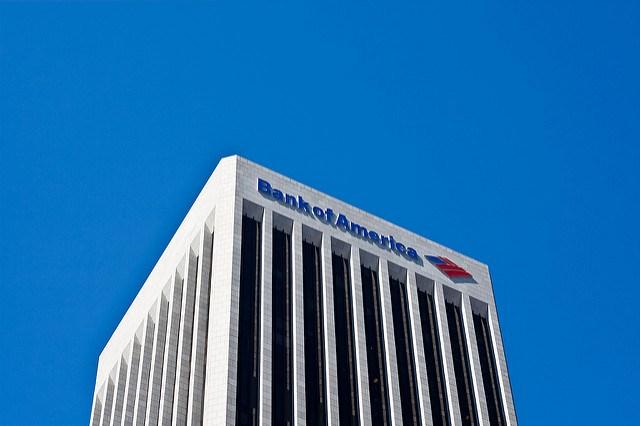

Climate Week NYC, an annual environmental side-event coinciding with the start of the United Nations General Assembly, is winding down. For several days, venues across Manhattan hosted summits, panels and forums to build up momentum for the annual Conference of the Parties (COP) climate talks, which this year will be held in Marrakesh, Morocco. Climate Week also brings together some of the world’s largest corporations, many of which sponsor the event to showcase their progress on mitigating climate risks.
But Rainforest Action Network (RAN) insists the large multinational banks that sponsored Climate Week are not exactly putting their money where their mouthes are. Instead, RAN claims these banks are plunking their money into fossil fuel projects around the world, which in turn negates any the progress they're making on climate change.
A 2016 report, published by RAN along with partners, reveals the scale of the financial sector’s investments in petroleum, natural gas and coal. From 2013 to 2015, 25 of the world’s largest banks financed almost $800 billion in fossil fuel investments. These banks include Climate Week platinum sponsor Bank of America, affiliate sponsor JPMorgan Chase and supporting sponsor BNP Paribas (which owns Bank of the West).
Juxtaposed against other sponsors, which include SolarCity, the climate advisory EcoAct and the Sustainable Coffee Challenge, the banks’ participation in Climate Week comes across as odd considering their far-reaching investments in the fossil fuels sector.
Climate Week’s banking sponsors are only a few of the world’s largest banks RAN and its partners evaluated in the study. Researchers analyzed the largest banks in the U.S., Canada and Europe, and graded them based on the level of financing within the coal, liquefied natural gas (LNG) exports, and extreme oil (as in: tar sands or extreme offshore oil) sectors. RAN, along with BankTrack, Sierra Club and Oil Change International, also evaluated the companies’ disclosures related to human rights.
Grades of a C or lower are the norm in the industry, according to the findings. A B- is rare, and it's worth noting that Bank of America and JPMorgan both received this score. BNP Paribas scored a C+.
The RAN report has its claws out for just about every multinational bank, including Deutsche Bank, the financier behind Blackhawk Mining. The Kentucky-based company became a coal powerhouse this decade by purchasing the assets from struggling coal producers such Arch Coal and Patriot Coal. As a result of $1.3 billion in loans from Deutsche Bank, the company continued mountaintop removal (MTR) mining across Appalachia. RAN says such practices contributed to the destruction of mountains throughout the region, as well as to health problems such as birth defects, cancer and heart disease. Deutsche Bank announced earlier this year that it would no longer underwrite loans for MTR mining projects, but RAN insists plenty of damage has already been done.
But it is platinum sponsor Bank of America that is often called out for what RAN infers as hypocrisy for supporting Climate Week on the one hand yet financing fossil fuel projects with the other. RAN estimates the bank invested as much as $69 billion in oil, gas and coal projects this decade. And the group has a point, especially considering that the company says it has financed $53 billion in “low carbon activities” since 2007.
And this about more than these banks’ contribution to climate change and environmental degradation. As other advocacy groups point out, including the activist investor NGO Ceres, banks’ continued investments in fossil fuels exposes investors to a bevy of risks. And those risks include: stranded assets that stay in the ground as more private companies and governments invest in clean energy technologies; exposure to human rights abuses that can result in backlash against a company operating overseas; and the prospect that conventional energy prices will stay low for a long time.
That turns investments in expensive projects such as tar sands and offshore oil extraction into huge liabilities on a company’s balance sheet, whether it's a financial institution or not.
Image credit: Pete Kraynak/Flickr
The Reusable Space Rocket and Other 21st-Century Accomplishments
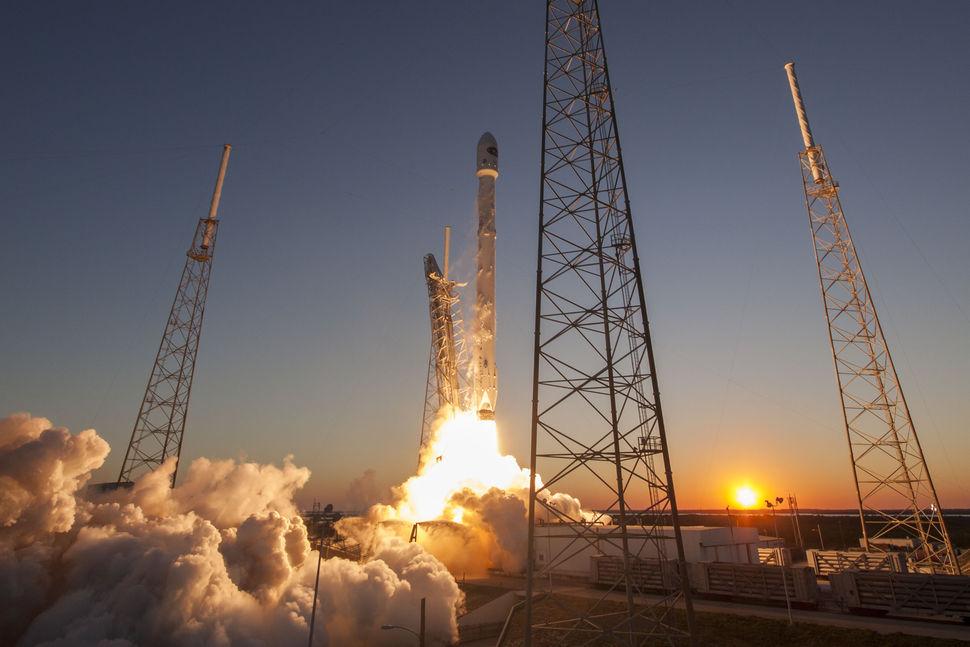

When the U.S. National Aeronautics and Space Administration (NASA) launched its first manned space flight in 1961, few thought about the impact of carbon emissions on the earth's atmosphere, much less the ballooning costs of space exploration. All eyes were on the skies above. America's task at hand wasn't worrying about the material, dollar or environmental costs of a sky-high dream; the focus was making it happen.
But today, space engineers know differently. NASA's financial costs for the government-run aeronautics program turned out to be far greater than the $20 a year that each U.S. citizen paid toward the program out of his or her taxes when it started. A rough estimate puts the cost of the NASA program at $200 billion -- or $450 million per launch.
By the time NASA flew its last shuttle mission in 2011, it had put astronauts on the moon and figured out how to build the world's first reusable spacecraft. It had proved space flight was possible. But it hadn't proved that it was sustainable, either financially or ecologically. That would be the mission of the next wave of inventors: private startups with big aspirations and pragmatic, shoestring budgets.
Commercial space flight
NASA's greatest operational strength has ironically been its weakness: a government size-budget that, through the use of contractor bidding, was able to outsource much of its need for technical construction. The U.S. aeronautics program of the 1960s, '70s and '80s relied on government contracts with engineering firms that had the expertise to build the technology needed. But it came with increasing budgetary strain and concern about the sustainability of space flights.
In 2006, faced with the inevitable end of the space shuttle program in 2011, NASA challenged private industry to develop sustainable cargo and transport systems to meet the needs of an international space station. To add incentive, NASA's new administrator, Mike Griffin, earmarked $500 million for private space development. NASA's new Commercial Orbital Transportation Services (COTS) was born, and with it a new generation of aeronautics engineers, each with their own area of expertise and drive toward space.
The next mission: The sustainable, reusable spacecraft
One of the first challenges identified by the international space community was the need for a reusable spacecraft that was affordable and met the challenges of landing in a restricted environment. The NASA space shuttle -- the world's first reusable spacecraft -- had the plus of being able to land with a modicum of comfort in the form of a conventional jet. But the design wasn't necessarily practical or affordable.
Several private companies have made this goal part of their mission and are working to create a rocket that not only can launch from a pad, but also return safely to earth.
SpaceX, founded by Tesla CEO Elon Musk, compares the task to today's busy commercial airliners. For it to be economically productive, the new craft must eventually be able to launch, deliver its payload and return several times a day.
On May 25, 2012, Space X made history when its Dragon spacecraft (transported by Space X's two-stage rocket, the Falcon 9) became the first private spacecraft to visit the international space station. After separation from the rocket, the Dragon successfully docked at the ISS, which allowed U.S. astronauts to board and take air samples, and then load the Dragon with cargo en route to NASA. The spacecraft successfully returned to earth six days later, touching down in the Pacific Ocean about 450 miles off the coast of Los Angeles.
Since that time, the Falcon 9 has made several cargo trips to the space station, as part of a $2.6 billion contract with NASA. A stipulation of that contract is that SpaceX must also demonstrate that it would be able to transport astronauts to the ISS in future flights. SpaceX and Boeing, which was also awarded a contract, have until 2017 to meet the requirements for certification by NASA. A privately-operated manned spacecraft would not reduce the cost of current shuttle flights (at the moment NASA pays Russia $70 million per seat to shuttle U.S. astronauts to the station). But it would put private space flights within reach of NASA's next goal: Mars.
So far, both Boeing and SpaceX are on track to meet NASA's rigorous certification process. Both contractors received two orders for crew missions, due to take place in the next few years.
Once certified by NASA, SpaceX will be eligible to transport SpaceX's manned Dragon V2 shuttle, a far cry from the early test model of 2012. The beefed-up shuttle will carry up to eight passengers and is expected to be able to land anywhere on earth, instead of parachuting into the ocean. The Falcon Heavy, SpaceX's most powerful rocket to date, will serve as the propulsion behind the shuttle. According to SpaceX, the Falcon Heavy will give the company the ability to not only to repeatedly transport crew to space stations, but also to land on the moon or Mars.
The commercial race for galactic space
SpaceX's early forays into space proved that commercial flight innovation is possible. But it has by no means defined the boundaries of space innovation. Dozens of companies are now competing for a foothold in commercial aeronautics development, recognizing that the next frontier in travel and tourism will likely be in aerospace.
Blue Origin, owned by innovator and Amazon CEO Jeff Bezos, is one such contender and has had its sights firmly set on the suborbital flight experience. The company attracted global attention after it proved in November 2015 that it could successfully launch a rocket to 329,839 feet and landed it safely in 119 mph crosswinds. In June of this year, Blue Origin was selected as one of several companies to compete in NASA's Flight Opportunities Program. Blue Origin, UP Aerospace, Virgin Galactic and three other competitors will go toe-to-toe to develop new technology for the agency's suborbital space program.
Blue Origin's greatest contribution to sustainable space development, however, may be its research into the BE-4 hydrogen engine. Fully and privately funded, it offers NASA a rocket engine with no out-of-pocket developmental costs. And as experts noted, it also provides a viable alternative to using Russia's pricey shuttle services, while lending support to a low-emission propulsion system.
NASA's accomplishments in space were once defined by the country's largest and most established aerospace corporations -- companies that had the track record behind them and a niche that could be used in government undertakings. Today's galactic discoveries are being mapped out by small, bold, "ferocious" and fearless startups which realize that getting to the stars is only half the journey. And that it is their drive, both independently and collectively, that will decide what tomorrow looks like.
https://youtu.be/xYYTuZCjZcE
Images: SpaceX; Video Blue Origin
The New ‘Plastics and Sustainability’ Report: Greenwash or Wake-Up Call?

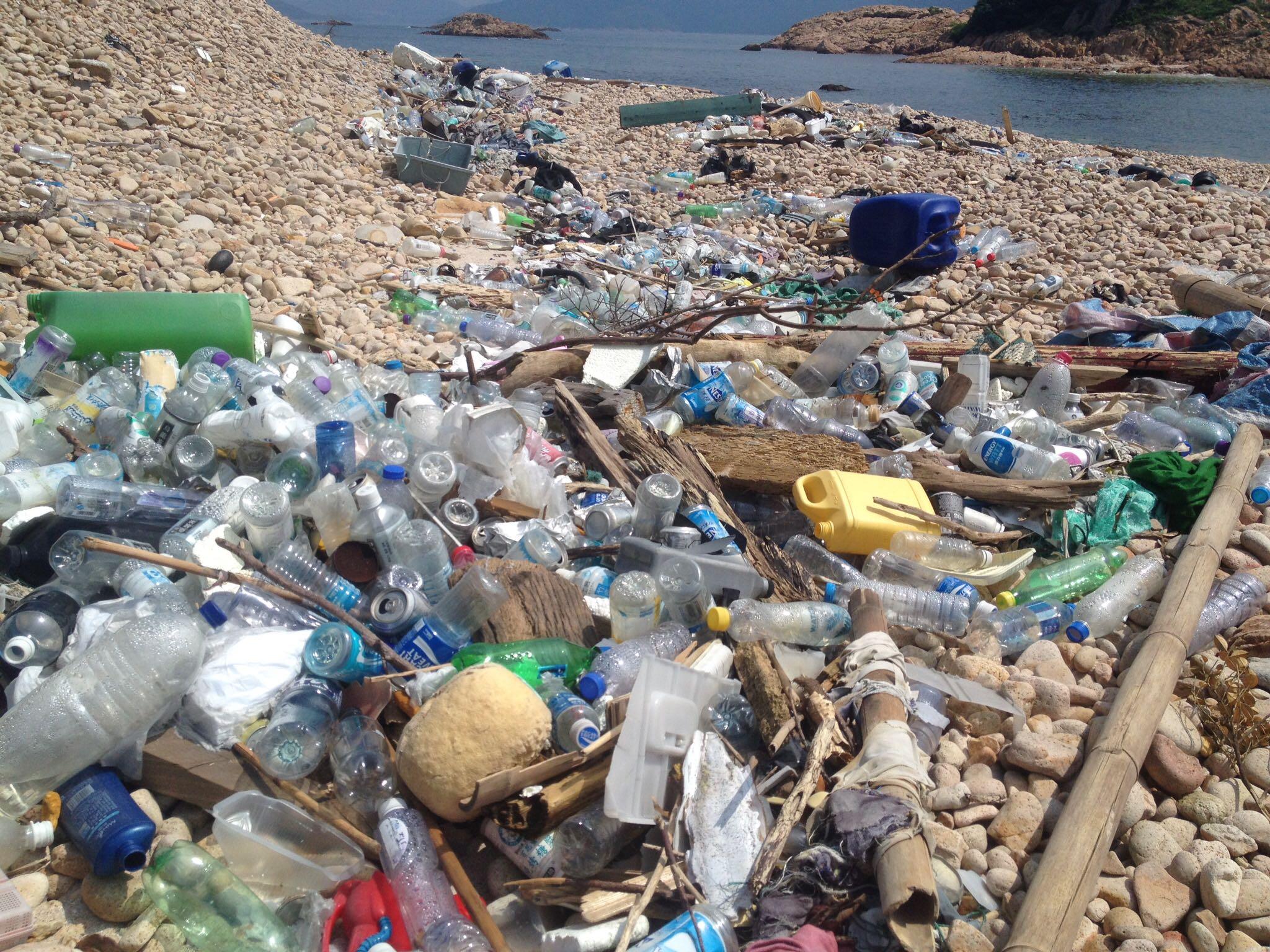
By Doug Woodring and Marcus Eriksen
Last month, Jacquelyn Ottman penned a topical article on TriplePundit in response the recent report by Trucost and the American Chemistry Council, called “Plastics and Sustainability.” And she brought up some good questions relating to this growing, challenging issue of plastic pollution.
As the initiator of the report with Trucost -- which we created for the United Nations Environment Program (UNEP) in 2014, “Valuing Plastic: The Business Case for Measuring, Managing and Disclosing Plastic Use in the Consumer Goods Industry” -- we feel it fitting to contribute some comments to this discussion.
There is no disputing that plastic has brought positive benefits to our economy, such as in electronics, hospitals and safety equipment, as well as some environmental savings in transportation (energy) and resource replacement. The single-use, throw-away application of so many plastic products, however, resulted in problems related to environmental pollution, ecotoxicity and social justice.
These issues should be the overriding message and warning call to our communities from this report. These are the unintended consequences of replacing materials like glass, metals and paper for plastic alternatives. Its relative low cost of production, light weight, durability and ease of use by virtually all sectors suggests that plastic production may continue to increase with population growth and a growing global middle class. It is not likely that we will go “back in time” in order to re-initiate the use of wood, paper, glass and metals as widely as they were used in the past, simply because our natural resources cannot sustain such demand.
But the use of plastic in many applications that contribute to the waste stream could be replaced by biological or inert materials. Source reduction in some sectors is also essential.
Plastic’s durability is its asset for the initial purpose of use, but it is also the material’s downfall in its “afterlife” due to the long-term liability it creates if the material is not recycled or recovered for alternative use. And thus our challenge. How do we harness the benefits, but eliminate the ecological and community-related stresses that plastic pollution creates? How do we shift from a linear economy to a circular economic model?
This recent report should be a wake-up call to all of us that we must change the perception of waste as a burden, to that of one where it is sought after as a continued resource by implementing end-of-life design thinking. We need significantly more funding for innovative materials and product/packaging design, leadership (corporate and government), new business models, and maybe most importantly, the acceptance of internalizing costs at the front end of the material’s use.
While the total costs to the environment and communities caused by plastic pollution are difficult to measure, we should not worry over the exact numbers, for if something is not natural to the environment in the first place, it should not be there. If communities are awash in unrecyclable waste, then there’s a leak in the system that must be closed, and systems must be reinvented.
Studies are not needed to quantify, qualify or justify the existence of “some” plastic pollution in the name of growing economies and “convenient” lifestyles. Creating an “acceptable tolerance for waste” is unacceptable. France recently became a leader in this enlightened thinking, calling for a ban on disposable plastic foodware by 2020. It's the first country to do so across the board.
The challenge now is bringing the vast number of stakeholders from industry, government and the community to attack the issues of plastic pollution and waste in the same way that we have started to come to terms with climate change. Plastic pollution impacts people on a daily basis in many ways, and is much more tangible to solve, since it is something that we can all see, touch and feel. Given that almost all plastic waste has been touched by a human hand, this should be a problem that we can collectively solve.
Note: The Plasticity Forum in London this week on September 21st as part of the London Design Festival is an example of cross collaboration by industry experts to be sharing solutions that can and should be scales to reduce our looming waste crisis.
Doug Woodring is co-founder of the Ocean Recovery Alliance/Plasticity Forum.
Dr. Marcus Erikson is co-founder of the 5 Gyres Institute.
About Ocean Recovery Alliance: Ocean Recovery Alliance is an NGO that brings together new ways of thinking, technologies, creativity and collaborations in order to introduce innovative projects and initiatives that help to improve our ocean environment. One of its programs is the Plasticity Forum, while it also has two projects with the Clinton Global Initiative focused on the reduction of plastic pollution, and is one of the only NGOs in the world to be working with both the United Nations Environment Programme (UNEP) and the World Bank’s Global Partnership for Oceans.
About 5 Gyres Institute: 5 Gyres undertakes transoceanic research expeditions, education projects and campaignes to understand the ecological impacts of plastic marine pollution. 5 Gyres Institute is the first organization to investigate the impact of plastic pollution on the marine environment globally, primarily documenting the presence of accumulation zones in the five subtropical gyres.
Dr. Bronner’s Says Bye-Bye To Organic Trade Association


Dr. Bronner’s is less than thrilled with the Organic Trade Association (OTA). The company that makes soap and organic body care products resigned from the OTA earlier this week. Dr. Bronner's says the OTA drifted away from its opposition to Senate Bill 764, what critics labeled the DARK (Deny Americans the Right to Know) Act, and lent support to it. President Barack Obama signed the legislation into law this summer.
The new legislation creates mandatory, national labeling standards for genetically modified (GMO) foods and preempts state GMO labeling laws. In 2014, Vermont became the first state to pass a mandatory GMO labeling law. Connecticut and Maine passed similar laws. As Andrew Kimbrell, executive director of the Center for Food Safety, wrote in a blog post last month: “With a few strokes of his pen, Obama scratched out the laws of Vermont, Connecticut and Maine that required the labeling of genetically engineered (GE) foods.”
The legislation not only nullifies state GMO food labeling laws, but also GMO seed labeling laws in Vermont and Virginia that allow farmers to “choose what seeds they wanted to buy and plant,” Kimbrell wrote. It also nullifies Alaska’s GMO fish labeling law. And as it is written, the new legislation “might not even apply to ingredients derived from GMO soybeans and GMO sugar beets,” according to Just Label It.
Back in August, Dr. Bronner's CEO David Bronner penned a piece for the Huffington Post. He described the GMO labeling law as “a gift to the pesticide and food industries who make and sell GMOs.” Bronner pointed out that instead of “clear on-pack labeling to disclose the presence of GMOs,” companies are allowed to use either QR codes or 1-800 numbers. A survey by the Mellman Group found that only 16 percent of shoppers said they have ever scanned a QR code to obtain information about a food product.
Bronner wrote that he and other movement leaders see the legislation as “made possible in large part” by the OTA’s betrayal of the movement for mandatory GMO labeling. And Bronner is not the only one who sees it that way. The Organic Consumers Association wrote an open letter to members of the OTA urging them to cancel their membership and called it the “Organic Traitors Association.” The letter described the U.S. Senate as struggling to pass the DARK Act “until the OTA got involved.”
In a July press release, the OTA sang the praises of the legislation, describing it as requiring “disclosure of GMO ingredients, but also includes important provisions that are excellent for organic farmers and food makers – and for the millions of consumers who choose organic every day.” Interestingly, the OTA mentioned that “without the citizen-led efforts in Vermont and other states, this compromise bill would never have come to fruition.” But the OTA failed to mention that the laws in Vermont and other states are preempted by the legislation they chose to support.
Rather than support the OTA, Dr. Bronner’s will support organic agriculture by lending its name to Rodale’s new Organic Farmers Association and the International Federation of Organic Agricultural Movements. “We are particularly thrilled to support Rodale's new Organic Farmers Association and the expansion of their regional teaching farms across the country, as well as participate in the North American General Assembly of the International Federation of Organic Agricultural Movements (IFOAM) at Expo East," David Bronner said in a statement. "We encourage all true organic companies, whether they choose to remain a part of the OTA or not, to support and participate in both.”
Hopefully, Dr. Bronner's withdrawal from the OTA will prompt other companies to do the same and send a message to the organization that its stakeholders feel change is necessary.
Image credit: Dr. Bronner's
Regenerative Agriculture: More Important Now Than Ever
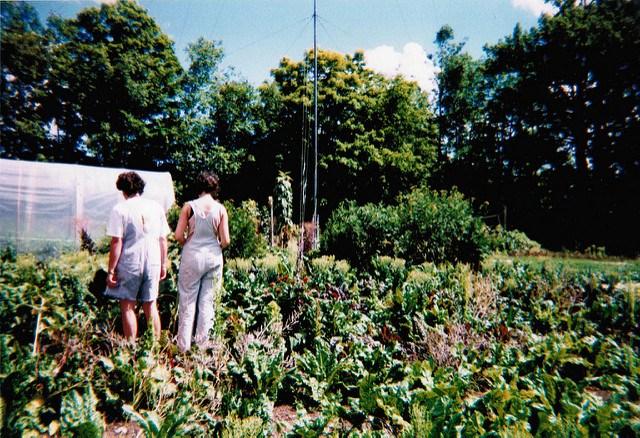

Last week's news that Monsanto and Bayer would merge to form the world's largest agribusiness company sent shockwaves throughout the food industry. Will our food system continue to unify under a few conglomerates? Or can alternatives, like regenerative agriculture, shift the balance back into the hands of both people and the environment?
The desire is there. At SOCAP16, it was standing-room-only at a packed panel titled “Regenerative Agriculture: Buzzword or Last Hope for Reversing Climate Change." The event showcased the need for not only new ideas, but an entirely new system for both producing food and empowering local farmers and food producers. The recent news that the world's oceans are no longer sucking up CO2 gave added impetus to the potential for the earth – which, until we began pumping it out, stored immense carbon stocks – to, perhaps, pick up the slack again.
Soil-based carbon sequestration can, in fact, be incredibly effective, said Ariel Greenwood of Holistic Ag.
“Agriculture is the missing piece to solving global climate,” Greenwood said during the panel.
In fact, for generations, agriculture lived in balance with nature, and there is strong evidence that farmers in the Amazon purposely sequestered carbon to make soil more rich and fertile. It is only with the advent of industrial agriculture that we shifted away from such systems.
The current system, championed by large agribusiness firms, focuses not on soil quality or empowering local farmers, but on only one thing: producing huge quantities of cheap, mono-culture crops on the same piece of land. While this kind of thinking resulted in a massive growth in yields for crops like corn and soy, the cost has been huge. Massive amounts of fossil fuel-based fertilizers and chemicals are needed, resulting in elevated greenhouse gas emissions. And overuse of chemicals pollutes water. Just look at the “dead zone” in the Gulf of Mexico, which is about the size of Connecticut.
Though Monsanto, Syngenta and other companies love to tout their efforts at sustainability in their marketing, the agriculture system they built is one few would characterize as sustainable. And with agriculture accounting for nearly a quarter of carbon emissions around the world – and that's not even taking into account the massive energy costs of transporting food – it is clear that something has to change.
“Agriculture is the greatest force for good – or detriment – on the planet,” Greenwood said.
Regenerative agriculture can work. We already know that organic food, if scaled up, can feed the world. Regenerative agriculture would have huge side benefits: It would heal our soil and increase its water storage capacity and, most importantly, be a source of income and economic empowerment for communities across the world.
The challenge is one that is common among those of us working in social change – scaling up to combat giants. The new Monsanto-Bayer giant will be worth more than $66 billion. Though regenerative agriculture is growing, it is far from being able to challenge the food giants of the world.
“What the American diet will be like 10-plus years from now will be based on the decisions that are made today,” said Jesse Smith, a regenerative agriculture consultant at Casitas Valley Farm.
What we ultimately need is also a better food policy – one that recognizes the benefits of sustainable, local agriculture, and provides subsidies and assistance to allow such systems to grow. Right now, we heavily subsidize unsustainable, fossil-fuel intensive, big-corporate agriculture.
Hopefully, what we saw at SOCAP was the seeds of a new system, where social capital flows and helps sprout a new, better, greener system that can help us tackle the greatest challenge of our generation.
Image credit: Peter Blanchard via Flickr.